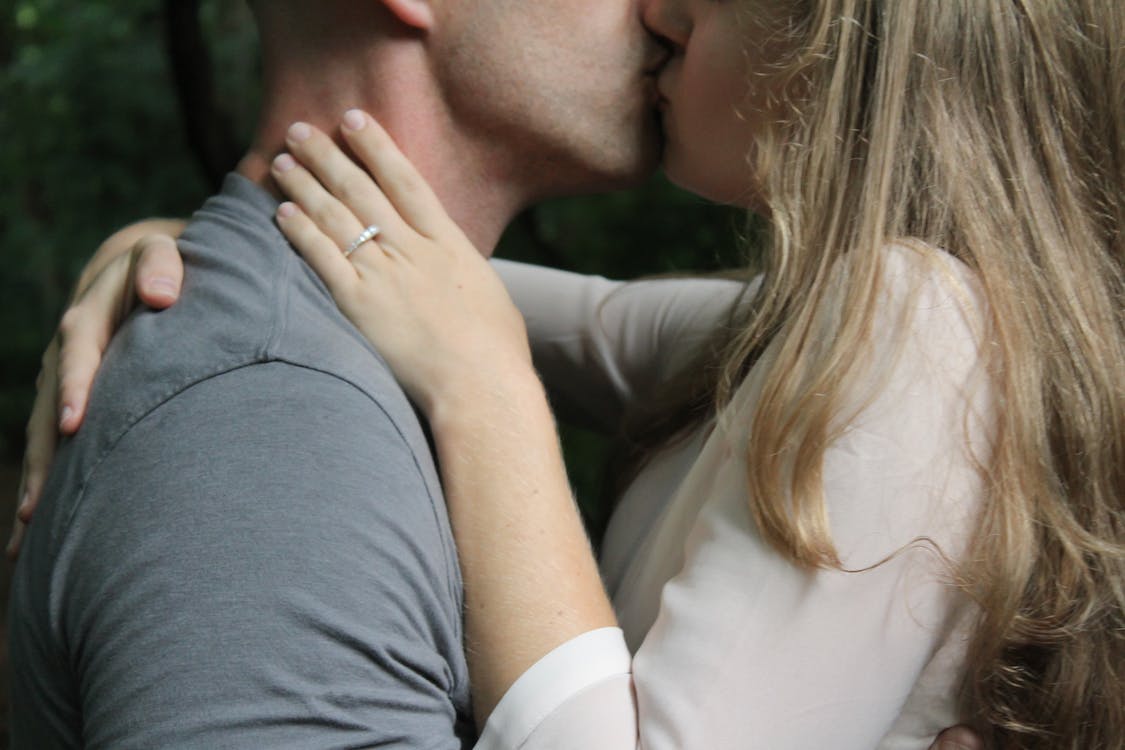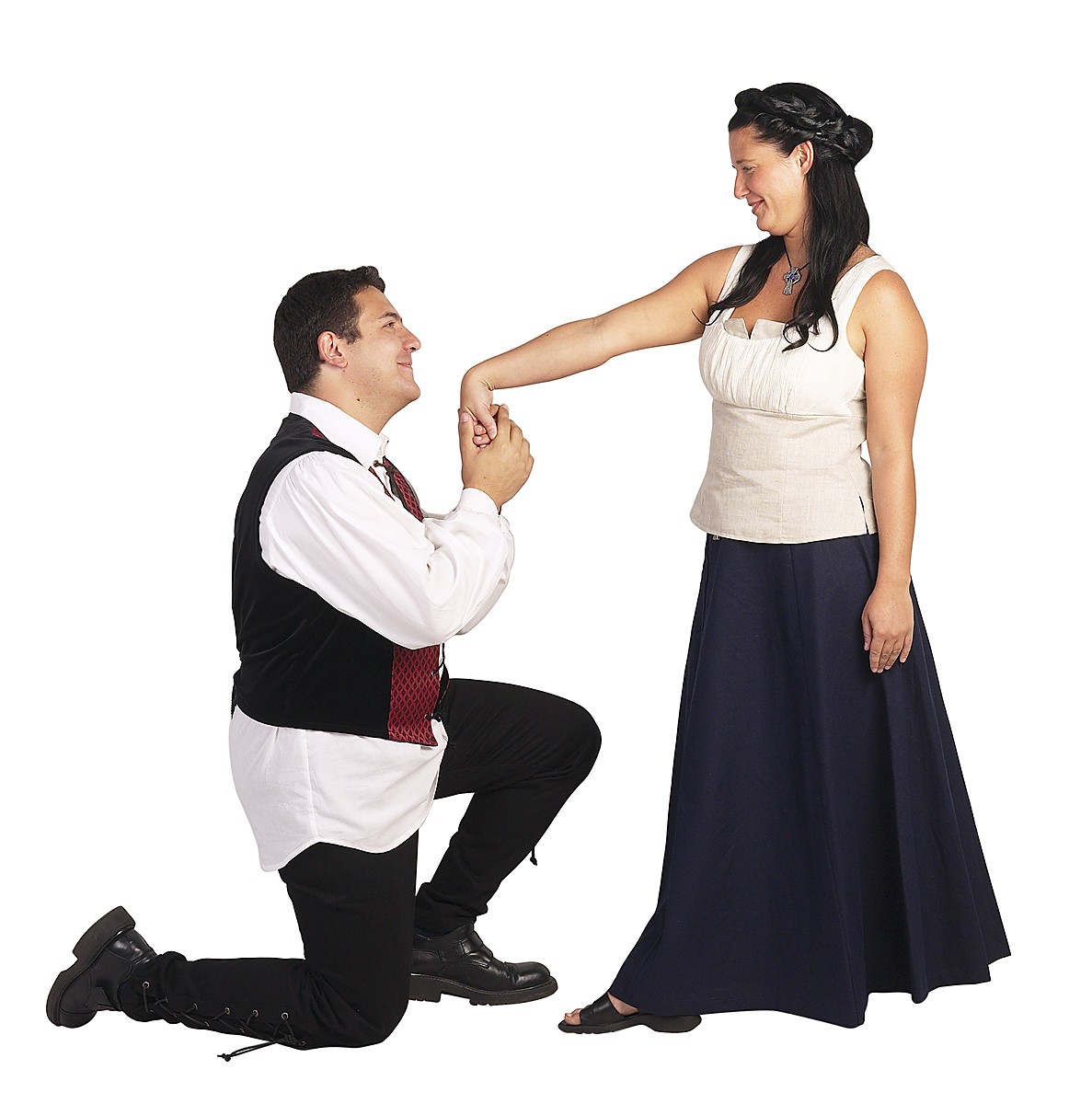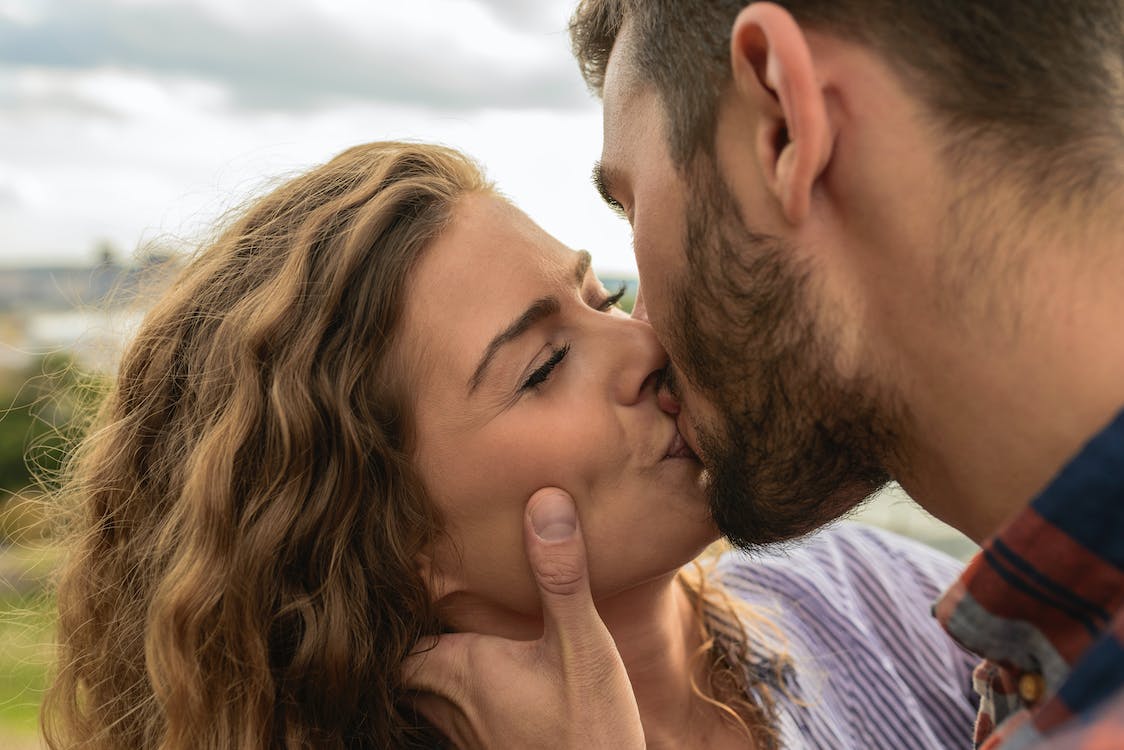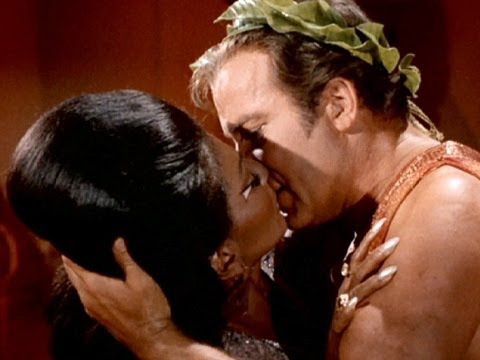Do Actors Really Kiss While Filming?
Lights, Camera, Kiss! The Art of On-Screen Romance
(By Carmichael Phillips)
 (Photo: Katie Salerno | Pexels)
(Photo: Katie Salerno | Pexels)
RELATED TOPICS:
Do Actors Really Kiss While Filming?
How Do Actors Kiss Without Kissing?
How Much Do Actors Get Paid for Kissing Scenes?
Romantic scenes, including passionate kisses, are a staple in film and television. Audiences often wonder whether actors actually share real kisses during these moments of on-screen intimacy. Let’s explore the practices and techniques actors employ when filming romantic scenes.
Real Kisses Do Happen
Yes, actors sometimes share genuine kisses during filming. In scenes that call for authenticity or intense emotional connection, some actors choose to share a real kiss. However, this practice is less common than you might think.
Professionalism and Consent

On-screen kisses are always conducted with professionalism and clear consent. Actors discuss their comfort levels and boundaries with their co-stars and directors before filming intimate scenes to ensure a safe and respectful working environment.
Camera Angles and Tricks
To create the illusion of a passionate kiss, filmmakers often use camera angles, close-ups, and clever editing. This means that even when it looks like actors are kissing, they might not actually be locking lips.
Lipstick, Breath Mints, and Gum
 (Photo: Vera Arsic | Pexels)
(Photo: Vera Arsic | Pexels)
Actors take hygiene and appearance into consideration. Lipstick and makeup are carefully applied, and they often use breath mints or gum to ensure fresh breath during close encounters.
Rehearsing and Choreography
Like any other scene, romantic moments are rehearsed and choreographed. This includes blocking out movements, determining camera angles, and practicing the timing of the kiss.
Emotionally Engaging
Actors often focus on conveying the emotional connection between their characters rather than the physical act of kissing. This can make the scene feel authentic even when the kiss is not real.
Privacy on Set
Filming intimate scenes can be awkward, so actors are typically given some degree of privacy on set. Crew members not directly involved in the scene may be asked to leave the area to ensure the actors’ comfort.
Use of Stand-Ins or Body Doubles
 (Photo: Mart Production | Pexels)
(Photo: Mart Production | Pexels)
In some cases, especially when actors have personal or professional reasons to avoid kissing on screen, stand-ins or body doubles may be used for kissing scenes. These doubles resemble the actors and can be used for specific shots.
CGI and Special Effects
In rare instances, filmmakers may use CGI (computer-generated imagery) or special effects to create the illusion of a kiss. This allows for precise control over the visual elements of the scene.
Mutual Respect
Actors prioritize mutual respect and professionalism. They understand that the kissing scenes are part of their job and approach them with the same dedication and commitment as any other aspect of their roles.
On-screen kisses, like all aspects of filmmaking, involve a combination of artistry, professionalism, and technical skill. While some actors do choose to share real kisses for the sake of authenticity or artistic expression, many factors contribute to the illusion of a passionate kiss on screen, including camera work, choreography, and the actors’ ability to convey emotion convincingly. Ultimately, the goal is to create a captivating and emotionally resonant scene that enhances the storytelling experience for the audience.

When audiences watch a romantic movie, it’s easy to get swept up in the magic of a kiss between two characters. However, the truth behind the scenes is often far different from the fantasy. For actors, kissing each other on set is typically a professional obligation rather than an intimate experience. They must navigate personal boundaries, the director’s vision, the technical logistics of filming, and their own feelings — all while performing believably for the camera.
Kissing on set often comes down to choreographed precision rather than spontaneous passion. Actors must hit specific marks for the camera, ensure the right lighting, and sometimes perform multiple takes to capture the perfect moment. These realities can make the experience feel far less romantic than it appears on screen.
Actors prepare extensively before filming a kissing scene. Often, they will rehearse the scene multiple times and discuss boundaries beforehand. Clear communication is essential. Actors usually talk about what is and isn’t comfortable, and directors often act as mediators to ensure everyone feels safe.
For instance, Andrew Garfield once explained in an interview about his film “The Amazing Spider-Man” that kissing scenes with Emma Stone were a mix of nerves and professionalism. He said, “It’s a weird thing to talk about because it’s a very private thing made very public. But Emma made it easy — she’s wonderful.”
Mutual respect is key. Many actors treat these moments as just another part of the job, similar to executing a stunt or delivering emotional dialogue.
No matter how professional actors are, awkwardness can still creep in. Imagine standing inches from someone under bright lights, with dozens of crew members watching, while being asked to passionately kiss. It’s no wonder that many actors describe kissing scenes as among the most uncomfortable to shoot.
Jennifer Lawrence, known for her candid interviews, admitted that kissing her “Hunger Games” co-star Liam Hemsworth was “pretty awkward” because they were such close friends. “I would make it a point to eat garlic or tuna fish right before a kissing scene,” she joked during an appearance on “The Tonight Show.”
This sense of awkwardness is often something actors must work through quickly, especially if they are shooting multiple scenes requiring different emotional intensities.
Sometimes, real chemistry develops between actors during a kissing scene, and it can be felt both on and off screen. Many famous Hollywood couples, such as Ryan Gosling and Rachel McAdams (“The Notebook”) or Kit Harington and Rose Leslie (“Game of Thrones”), began their relationships after playing lovers on screen.
However, even when there is genuine attraction, most actors strive to maintain professionalism on set. Natalie Portman, when discussing her role in “Black Swan,” said that despite the intimate nature of her scenes with Mila Kunis, their friendship and focus on the film’s success helped keep things professional.
Real feelings can complicate a project, so actors often compartmentalize their emotions to focus on their craft.
In recent years, the role of intimacy coordinators has become vital on film sets. These professionals help choreograph intimate scenes, ensure all parties are comfortable, and protect against any misconduct.
Actors like Michaela Coel have advocated for the importance of having intimacy coordinators, especially after revealing her own negative experiences. With these coordinators on board, actors report feeling much safer and more respected during vulnerable scenes, including kissing.
This structured approach has changed the emotional landscape for actors, making it easier for them to focus on the technical and emotional aspects of their performance without worrying about crossing personal boundaries.
Kissing scenes can sometimes lead to hilarious stories. For example, Zac Efron recalled an awkward moment during the filming of “High School Musical” when he and Vanessa Hudgens had to kiss during a scene — only for the director to yell “Cut!” repeatedly because of poor angles and bad lighting, leading to dozens of awkward retakes.
Another funny incident involved Reese Witherspoon during “Water for Elephants.” She revealed that during a crucial kissing scene with Robert Pattinson, he had a terrible cold. She joked, “It wasn’t a romantic moment. It was more like, ‘I’m gonna wipe my nose on your face!'”
These stories remind us that while kissing scenes appear effortless on screen, the reality can often be quite the opposite.
Actors often have to explain to their real-life partners that kissing someone else on set is part of their job. For some couples, it’s not an issue. For others, it can create tension.
Blake Lively and Ryan Reynolds, both actors who have had to kiss other people for roles, have spoken about how they trust each other and view it purely as work. However, there have been instances where non-actor partners have expressed discomfort, leading to tough conversations about boundaries and trust.
Actors generally agree that honesty, transparency, and communication with their partners are critical to managing any emotional fallout from on-screen romances.
Ultimately, for most actors, kissing another actor is simply part of their job description. It’s often mechanical, sometimes awkward, and occasionally emotionally complex. But whether it’s a steamy romance scene or a shy first kiss, actors approach it with a mix of professionalism, respect, and technical precision.
As Chris Evans once put it, “You have to remember, there’s a camera inches from your face, a boom mic above you, lights everywhere, and twenty people standing around. It’s not exactly a private moment — it’s acting.”
Next time you watch a passionate kiss on screen, you’ll know that behind the scenes, it’s less about romance and more about craft.
Do Actors Use Their Tongue When Kissing?
Exploring the Reality Behind On-Screen Kisses
(By Javier Guerra)

(Photo: Vera Arsic | Pexels)
Introduction: The Magic of the On-Screen Kiss
Romantic scenes have enchanted audiences since the dawn of cinema, often climaxing with the electrifying moment of an on-screen kiss. But have you ever wondered, do actors actually use their tongues when they kiss? The answer is more complex than a simple yes or no. Factors like the director’s vision, actor comfort levels, and the nature of the film all play a role in determining how real a kiss gets.
Kissing on-screen walks a fine line between authenticity and professionalism. While some kisses are steamy and passionate, others are carefully choreographed to appear real without being too personal. Let’s explore the fascinating world of cinematic kisses and reveal some surprising behind-the-scenes facts.
Kissing Protocols: Consent and Boundaries
Before cameras start rolling, many actors discuss boundaries with their co-stars and directors. In today’s industry, intimacy coordinators often oversee scenes that involve kissing, ensuring that everyone is comfortable and consents to the level of physicality involved.
Typically, actors agree in advance whether a kiss will be “closed-mouth” (no tongue) or “open-mouth” (which may involve tongue). For many productions, especially on network television, kisses are designed to look passionate without being overly intimate. However, in movies or more mature shows, actors sometimes use their tongues to heighten the realism.
A famous example is Ryan Gosling and Rachel McAdams in The Notebook (2004). Their passionate kisses were full of raw emotion, and while they didn’t talk in-depth about tongue usage, the chemistry between them was palpable and very real, leading many to believe there was little “faking” involved.
When Tongue Is (and Isn’t) Used
In general, tongue usage depends heavily on the project. For example:
No Tongue: On many sitcoms or family movies, actors avoid tongue completely to maintain professionalism and appeal to broader audiences.
Some Tongue: In steamy dramas or romantic films, a little tongue might be used to make the kiss look more authentic.
Full Tongue: Rare, but it can happen in more explicit scenes, typically in movies rated R or above.
In Titanic (1997), Leonardo DiCaprio and Kate Winslet created one of the most memorable love stories of all time. Although their famous kiss scenes looked very passionate, they were highly choreographed. In interviews, Winslet said that such scenes are much more technical and unromantic than they appear.
Contrast that with the movie Blue Valentine (2010), starring Ryan Gosling and Michelle Williams. The director allowed them to live together for a month before shooting to build real intimacy. Their kissing scenes—and yes, even the use of tongues—were meant to feel organic and deeply personal.
Famous On-Screen Kisses That Felt Very Real
Some movie kisses are so intense that they spark rumors about off-screen romances. Here are a few examples where viewers suspected tongue was involved:
Emma Stone and Ryan Gosling – La La Land: Their chemistry was off the charts, making their kisses seem heartfelt and authentic.
Kristen Stewart and Robert Pattinson – Twilight: Given their real-life relationship, their on-screen kisses often felt more genuine, leading many to believe they didn’t hold much back.
Angelina Jolie and Brad Pitt – Mr. & Mrs. Smith: The fiery chemistry between these two stars was impossible to ignore, fueling speculation that their passionate kisses were anything but professional.
These examples show that when real feelings are involved—or expertly faked by skilled actors—the line between performance and reality can blur.
Actors Speak Out About Their Kissing Scenes
Many actors have spoken candidly about kissing on camera. Here are some notable quotes:
Jennifer Lawrence (The Hunger Games, Silver Linings Playbook): “Kissing scenes are the most awkward thing in the world… especially when you know each other well. There’s no romance—just bad breath and nose smushing.”
Mila Kunis (Friends with Benefits): “You close your eyes, pretend you’re somewhere else, and go for it. Tongue or no tongue, you just follow the script.”
Jake Gyllenhaal (Brokeback Mountain): “It’s technical. You talk about it, you choreograph it. It’s not like a real kiss, but you try to make it feel real.”
These testimonials reveal that most actors approach on-screen kissing like any other part of their craft—professionally and thoughtfully.
When Kissing Goes Beyond Acting
Sometimes, actors get swept up in the moment. A classic example is when Andrew Garfield and Emma Stone, who were dating during the filming of The Amazing Spider-Man, shared tender on-screen kisses that felt spontaneous and emotionally charged.
Similarly, Zac Efron admitted that during a kiss with Zendaya in The Greatest Showman, “it was real… that wasn’t acting.” In these cases, whether tongues were involved or not becomes secondary—the emotional honesty is what captivates the audience.
Director Influence and Scene Requirements
Sometimes it’s not up to the actors at all. Directors may insist on a certain level of passion to suit the tone of the film. For example, in Brokeback Mountain, director Ang Lee encouraged Heath Ledger and Jake Gyllenhaal to push past their comfort zones to portray a believable romantic relationship.
Similarly, in The English Patient (1996), director Anthony Minghella worked closely with Ralph Fiennes and Kristin Scott Thomas to create kisses that felt desperate and consuming. While it’s not documented whether tongues were involved, the intensity suggests there were no half-measures.
Training for Kissing Scenes
Believe it or not, actors sometimes train for kissing scenes just as they do for fight scenes. Workshops with intimacy coaches help actors choreograph kisses so they appear passionate yet stay within agreed-upon boundaries.
Kissing training emphasizes:
Breath control: So actors don’t run out of breath during a take.
Head positioning: To avoid awkward collisions.
Hand placement: To add realism without making co-stars uncomfortable.
Timing: To sync the kiss with camera movements and lighting.
This preparation can make a kiss look more fluid and natural, whether or not tongue is involved.
Famous “No-Tongue” Agreements
Some actors have specific “no-tongue” clauses in their contracts or personal agreements. For example:
Reese Witherspoon reportedly asked for “no tongue” during love scenes in several films.
Denzel Washington, known for maintaining a high level of professionalism, often ensures that intimate scenes stay tasteful and respectful.
Julia Roberts allegedly had no-tongue policies in early romantic roles to keep things professional.
These boundaries demonstrate that an effective on-screen kiss doesn’t require real-life passion or even tongue use—it just requires great acting.
Conclusion: The Truth Behind the Kiss
So, do actors use their tongues when kissing? Sometimes yes, sometimes no. It largely depends on the scene, the comfort of the actors, and the director’s vision. While some performances involve full-on passion, many are carefully crafted illusions designed to create maximum impact with minimal personal entanglement.
Ultimately, what matters most is how the kiss serves the story. Whether it’s a restrained peck or a passionate embrace, the goal is always the same: to transport the audience into the moment, making us believe in the romance, if only for a little while.
You Might Also Like:
How Much Do Guest Stars Get Paid?



